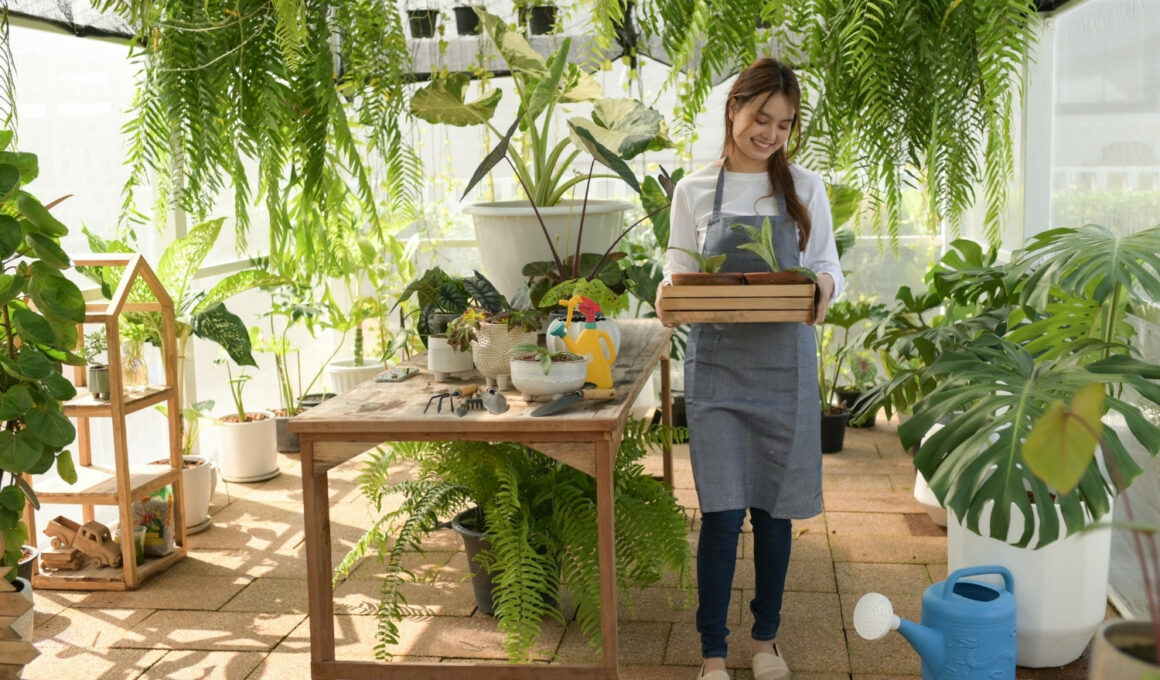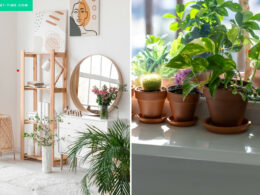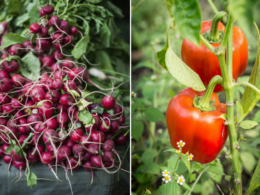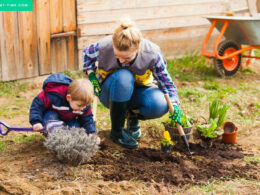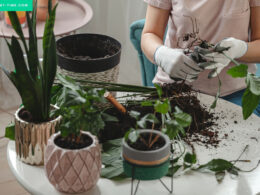In This Article Show
As a mum of three who has found her little slice of serenity in the soil of our family garden, I’ve learned a thing or two about cultivating a space that not only thrives but also lights up your corner of the internet.
Between school runs and soccer practices, my garden has become my pause button, and I want to share the joy with you.
Starting a garden that is both easy to manage and beautiful enough to grace the pages (or should I say boards) of Pinterest doesn’t have to be a distant dream. It’s all about choosing the right plants—ones that require minimal fuss but deliver maximum impact.
In this post, we’ll explore six plants that are cinch to grow and will transform your garden into the picture-perfect haven you’ll be eager to pin and share. Whether you’ve got a green thumb or are new to the trowel and gloves, these selections are tried-and-tested winners.
1. Sun-Loving Succulents
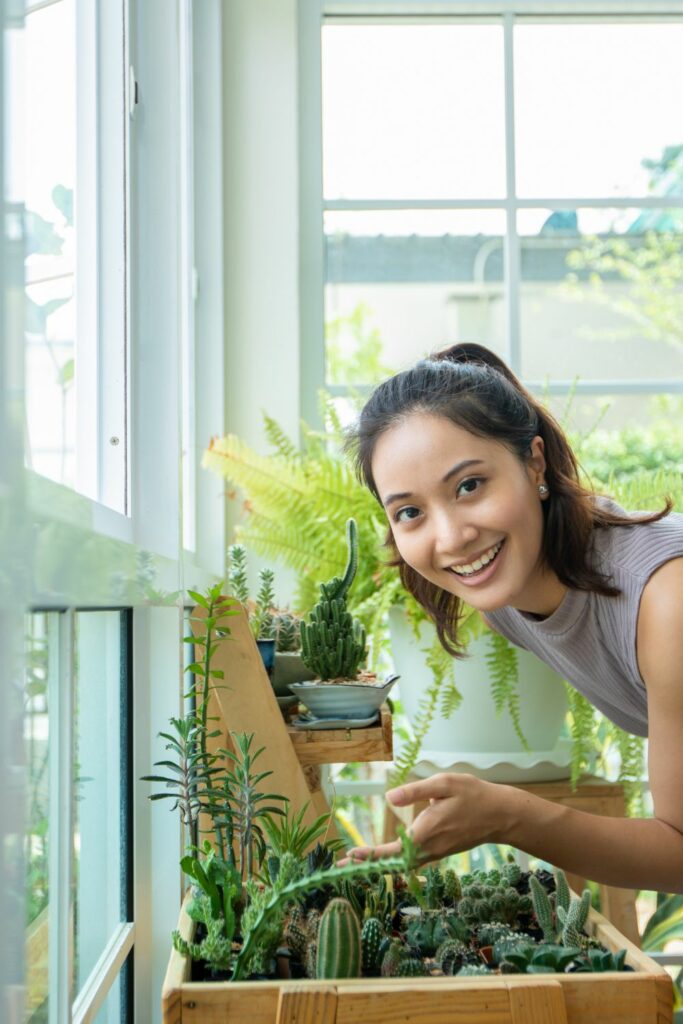
Succulents have taken the gardening world by storm, and for good reason. They’re the ultimate plant companion for busy bees, not demanding much but still providing that lush, sculptural quality we all adore in our gardens.
Let’s explore the essentials for integrating these resilient beauties into your outdoor space.
Great deals to snatch for your little ones 🎉
Types of Succulents That Thrive with Minimal Care
If you’re seeking plants that won’t keel over the moment life gets hectic, succulents are your allies. Aloe vera, with its healing gel, is as practical as it is pretty. Then there’s the classic Echeveria, boasting rosettes in a palette of colors that can put any filter to shame.
For something more statuesque, the architectural lines of Agave are a standout. And let’s not forget the ever-popular Jade plant, which might as well be synonymous with “unfussy.”
Tips for Succulent Placement and Soil Requirements
Succulents love the sun, basking in its glow like sunbathers by the pool. Place them where they’ll get at least six hours of sunlight a day to keep them happy. When it comes to soil, think the desert—well-draining and airy.
Opt for a potting mix specifically designed for cacti and succulents or make your own by amending regular potting soil with sand and perlite.
Remember, the key to succulent success is avoiding wet feet. Overwatering is the nemesis of these drought-loving darlings, so ensure your pots have drainage holes. Water only when the soil feels dry to the touch, and even less in the cooler months.
2. Lavender
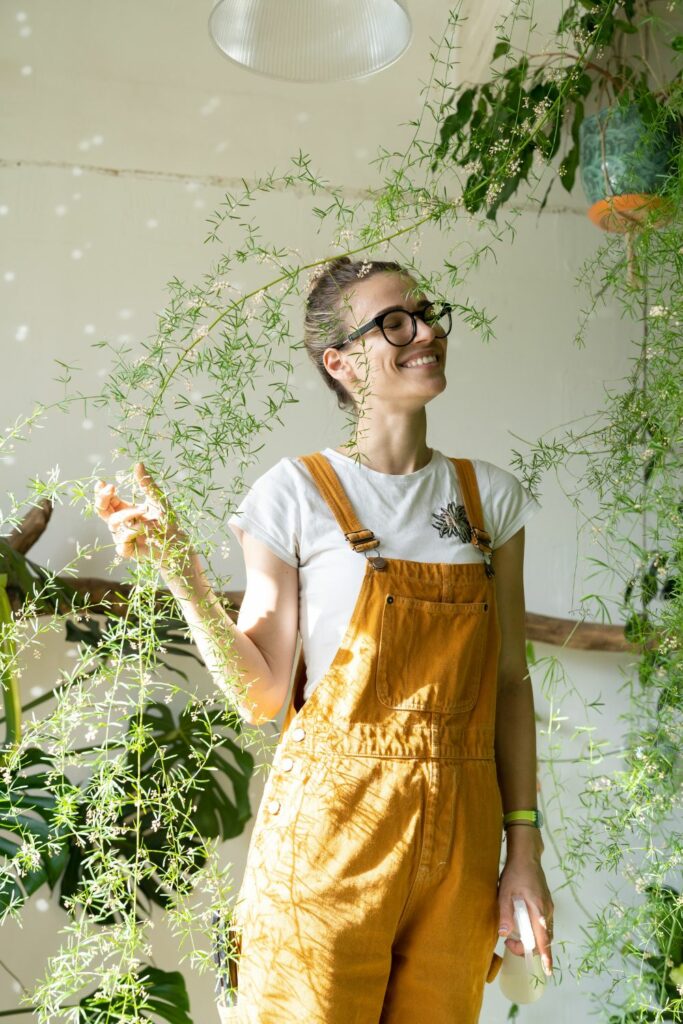
Lavender is like a breath of fresh, fragrant air in any garden. Its ability to withstand dry conditions and still produce those iconic, soothing blooms has made it a favorite among gardeners of all stripes. Let’s get into the particulars of welcoming lavender into your green space.
Whether you’re weaving through your daily tasks or planning the next family vacation, lavender won’t hold it against you if you forget the occasional watering.
Soil and Sunlight Preferences for Lavender
This fragrant herb worships the sun, thriving in open areas that bask in full daylight. Aim to plant your lavender where it will receive a minimum of six hours of direct sun each day.
When it comes to soil, lavender is pretty straightforward – it prefers well-drained ground with a neutral to slightly alkaline pH. If you’re dealing with heavy or clay soil, consider raising beds or adding horticultural grit and compost to improve drainage.
Benefits of Lavender in Garden Aesthetics and Its Uses
A lavender plant is a multitasker. Visually, its silvery-green foliage and purple spires bring a calming, structured look to any garden setting.
Lavender is also well-known for its seductive fragrance, which is not only a delight for the senses but can also help to deter unwanted insects.
Beyond the aesthetics, lavender’s uses are plentiful. Even in the kitchen, culinary lavender varieties can add a floral touch to baked goods and drinks.
3. Hardy Herbs
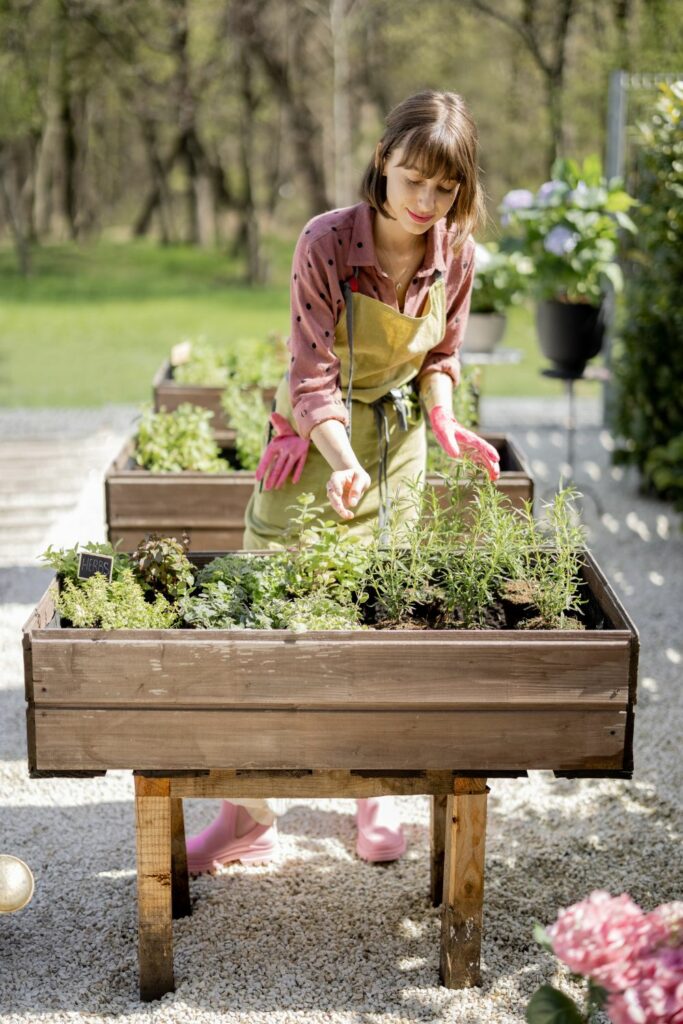
For those of us who not only want our gardens to look good but also serve a culinary purpose, hardy herbs are the perfect pick.
They’re as practical as they are picturesque, providing fresh flavors just a few steps from your kitchen door. Let’s talk about how robust herbs like rosemary and thyme can elevate your gardening game.
Rosemary, with its needle-like leaves and woodsy scent, pairs wonderfully with a variety of meats and vegetables. Thyme, on the other hand, is a versatile herb with tiny, fragrant leaves that can enhance everything from soups to roasts.
Ideal Conditions for Growing Herbs in Your Garden
Overwatering is a common misstep, so ensure that the soil dries out between waterings to prevent root rot.
Both rosemary and thyme are drought-resistant once established, making them forgiving for those times when life gets too busy for regular watering.
They don’t demand rich soils or frequent fertilizing; in fact, they often prefer the opposite, thriving in conditions where more finicky plants might struggle.
Incorporating Herbs into Garden Design for Functionality and Charm
Herbs can be more than just a food garnish; they can also garnish your garden with their beauty. Rosemary can grow into a substantial bush with a commanding presence and lovely blue flowers.
Thyme, with its lower growing habit, makes a fantastic ground cover or edging plant, releasing its delightful scent when brushed against or stepped on.
4. Marigolds
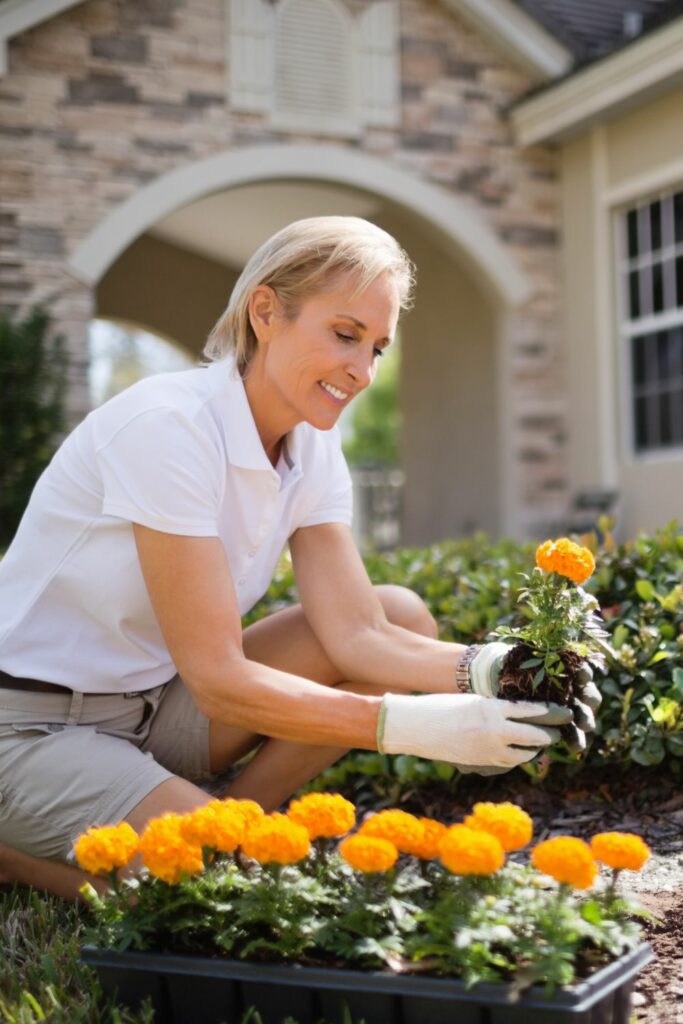
When it comes to adding a vibrant touch to your garden that’s as simple to care for as it is striking, marigolds are a top choice.
These cheerful blooms are as low-maintenance as they are lovely, making them a favorite among gardeners who want to add a long-lasting pop of color with minimal effort.
Best Practices for Planting and Caring for Marigolds
Planting marigolds is a breeze. Choose a spot with good sunlight—these flowers thrive with at least six hours of direct sun per day. Although they’re adaptable to various soil types, they do best in moderately fertile, well-draining soil.
When you plant your marigold seeds or seedlings, give them a little water to settle them in, and then only water when the soil is dry to the touch.
Feeding isn’t usually necessary, but an occasional, light application of a balanced fertilizer can support more robust growth in poorer soils.
Companion Planting Benefits and Pest-Repellent Properties
One of the most celebrated aspects of marigolds is their companion planting superpowers. When planted alongside vegetables like tomatoes and peppers, marigolds can help repel harmful pests such as nematodes and tomato hornworms, thanks to a substance they release from their roots and strong scent.
Integrating marigolds into your vegetable beds or along borders can thus contribute to a healthier and more balanced garden ecosystem.
5. Zinnias
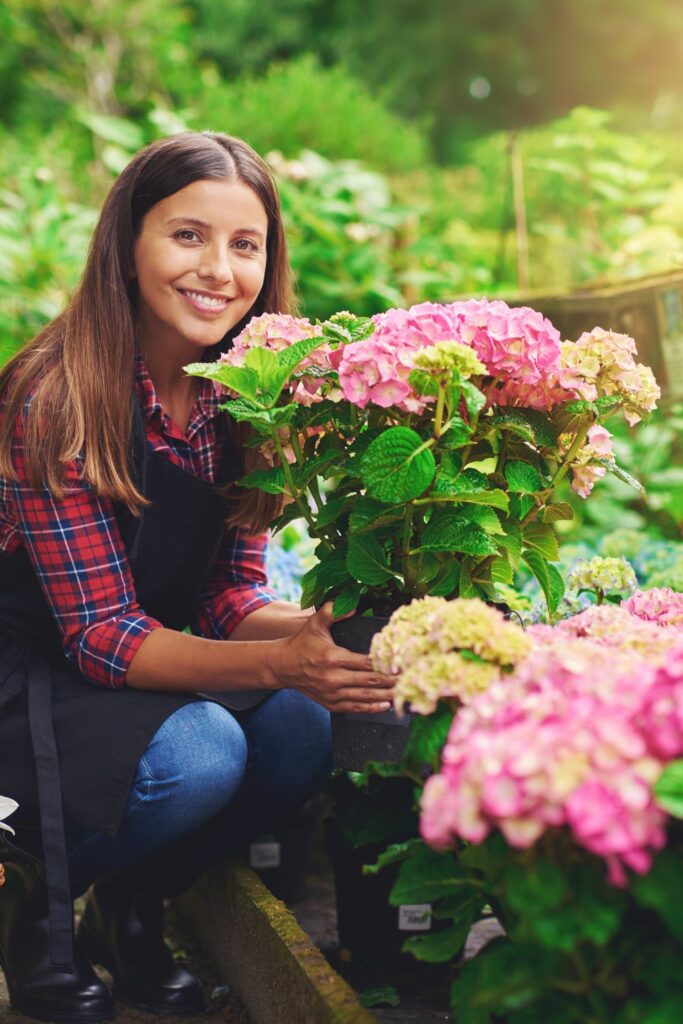
Zinnias are the quintessential “happy” flowers, offering a feast of colors and shapes that can light up any garden space. These delightful blooms are not just a visual treat; they’re also incredibly easy to cultivate, even from seed, making them a staple for a lively, picture-perfect garden that’s sure to stand out on any Pinterest board.
Tips for Achieving Continuous Blooms
For Zinnias, the secret to keeping the blooms coming is deadheading. This means removing the old flowers as soon as they begin to fade. Doing so encourages the plant to produce more blooms, striving to fulfill its natural mission to set seed.
You can also ensure a longer flowering period by planting your zinnia seeds in succession, spacing out plantings by a few weeks from early spring to summer.
Water them at the base to avoid mildew on the leaves and provide a steady supply of moisture, especially during dry spells, to keep those blooms vibrant.
Pairing Zinnias with Other Garden Plants for a Vibrant Look
Zinnias play well with others, making them fabulous companions for many garden plants. Their bright blooms are the perfect backdrop for silver-foliaged plants like dusty miller, or they can add contrast when planted among swaths of cool-hued perennials.
You can also use zinnias to create a gradient effect in your garden, arranging them from tallest in the back to shortest in the front. This not only adds depth but also showcases the variety of shapes and sizes that zinnias offer.
6. Cherry Tomatoes
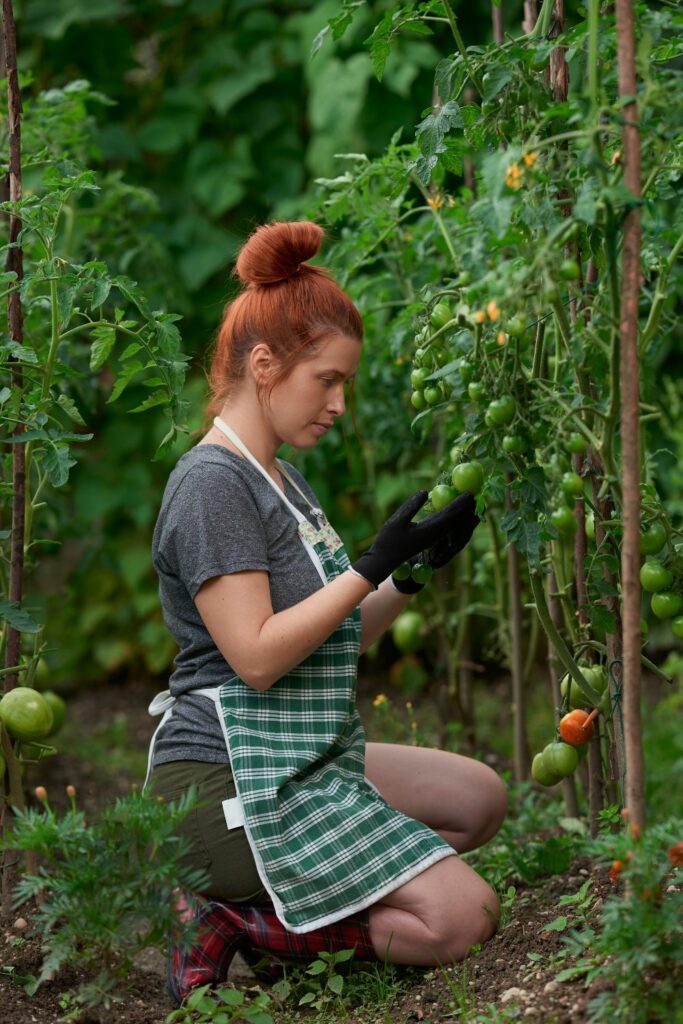
Cherry tomatoes are the jewels of the kitchen garden, dually serving as a delightful visual accent and a tasty treat right off the vine. Their small size and adaptability make them an excellent choice for gardeners looking to add a functional yet decorative element to their space.
Whether you’re scrolling through Pinterest for inspiration or planning your next meal, cherry tomatoes are a perfect pick.
Sunlight and Watering Tips for a Bountiful Harvest
Cherry tomatoes are sun worshippers, requiring around six to eight hours of direct sunlight each day to yield the best crop. When it comes to watering, consistency is key.
They prefer deep, regular watering that encourages strong root development, rather than frequent shallow sprinkles.
Creative Ways to Include Cherry Tomatoes in Garden Design
As practical as they are pretty, cherry tomatoes can be more than just an afterthought in your garden planning. Use them to create a vibrant edible border around your garden, or let them spill over the edges of hanging baskets for a touch of whimsy.
Their bright red, yellow, or even purple fruits can add a pop of color to floral arrangements or serve as a living garnish amongst your herbs and flowers.
Cherry tomatoes aren’t just plants; they’re an experience. Every little orb offers a burst of flavor, and every plant can become a centerpiece in the canvas of your garden.
They invite gardeners to not only grow food but to do so with a designer’s eye, crafting a space that is both beautiful and bountiful.






